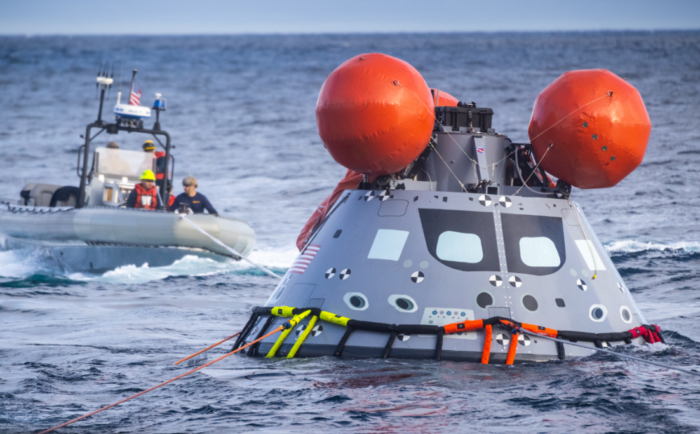The Orion spacecraft is officially on its way home.
Since being launched on November 26, the uncrewed craft has been continuing an exciting, groundbreaking mission—the first in NASA's new Artemis program.
And after three and a half weeks in space, that maiden voyage for Orion has its end point. On Sunday, December 11 (tomorrow!) at about 12:40pm EST, it will splash down into the Pacific Ocean off the coast of Baja California.
In case you haven't heard, Artemis is NASA's bold new program to bring humans back to the Moon. It's an ambitious plan and its missions will run into the 2030s. And it has all begun here with Artemis 1 and its Orion capsule, which has been orbiting the Moon without a crew to test how well it will hold up.
So far, it has gone off pretty much without a hitch, meaning that future missions with actual humans on board are in good shape! (The next mission, Artemis 2, is set to launch some time in 2024.) Here was the view from Orion on Monday as it orbited the Moon ...
.@NASA_Orion is only 1,550 miles away from the Moon right now.
The spacecraft will fly about 79 miles above the lunar surface at 11:42am ET (16:42 UTC). pic.twitter.com/vmpz7oFY4h
— NASA (@NASA) December 5, 2022
What a view!
Fast facts on re-entry and splash down
Now with Orion nearing the end of its mission, NASA have just a couple more hurdles to clear to ensure that the spacecraft is fully safe for humans to use.
It must re-enter the Earth's atmosphere and splash down gently into the Pacific where it can be retrieved by NASA. Here are things to look out for as the mission draws to a close.
- ZOOM!: Orion will enter our atmosphere at an incredible 40,000 km/h (25,000 mph). This is about 32 times the speed of sound, and 400 times the speed limit of most highways!
- Hot stuff: As Orion enters the atmosphere at this speed, it will cause incredible friction against the hull (outside) of the craft. This will raise temperatures to about 2,800°C (5,000°F), which is about half the temperature of the surface of the Sun.
- Cool it down: Orion's protection against this is a heat shield made of many layers of carbon fibre and a titanium frame. It is the largest heat shield of its kind and this is the first real test of its capabilities. No pressure!
- Chutes!: Once it is safely inside our atmosphere, about 7,300 m (24,000 ft) above the surface, Orion will deploy, or open, its series of 11 parachutes. Then it's just a matter of gently gliding downward until it hits the water. Whee!
- Testing is over: The U.S. Navy has been training for years to successfully recover Orion after it hits the water. The recovery mission will be done from a transport dock ship called the USS Portland, and will involve helicopters and inflatable rafts to corral the capsule.
 A scene from a training mission in 2021 to recover the Orion spacecraft after splash down in the ocean. Tomorrow won't be a drill, but the real thing! (NASA)
A scene from a training mission in 2021 to recover the Orion spacecraft after splash down in the ocean. Tomorrow won't be a drill, but the real thing! (NASA)









